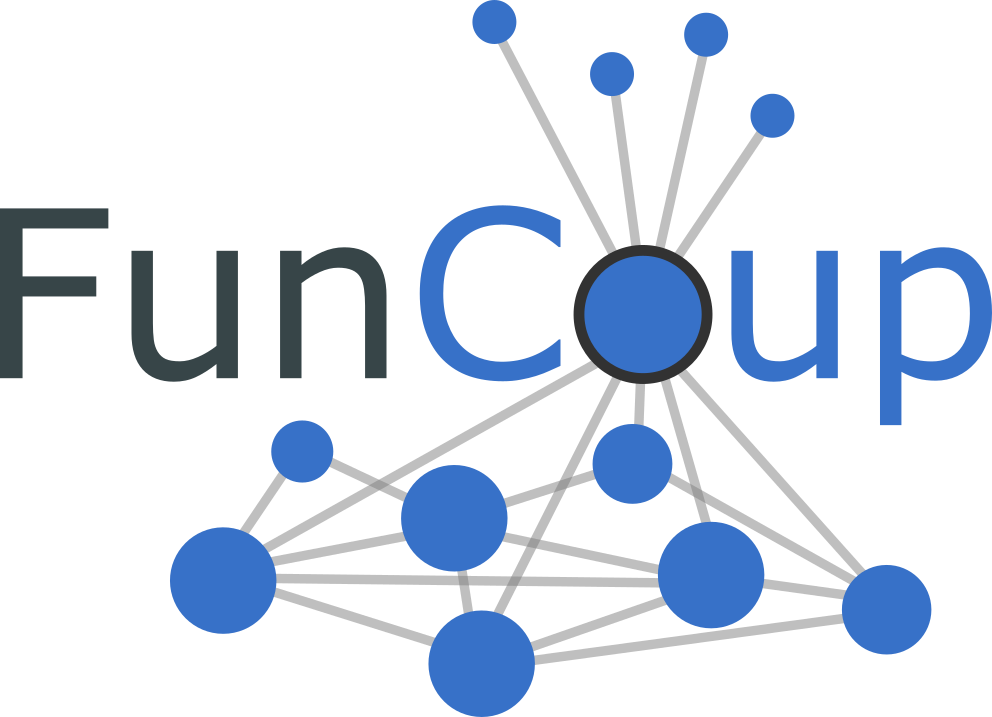
|
FunCoup5
Functional coupling, or functional association, is an unspecific form of association that encompasses direct physical interaction but also more general types of direct or indirect interaction like regulatory interaction or participation the same process or pathway.
Publicly available at https://funcoup.org/
Introduction
An introduction to the FunCoup web resource and its accompanying tools. A description of the underlying experimental data, the algorithm and the unique features.
MaxLink
A demo of how to identify novel disease gene candidates from a “Myasthenia gravis” gene set with the MaxLink tool in FunCoup.
Offline demo
In this video, we demonstrate how to use FunCoup offline with some practical examples. We also show you how to extract a network module from a gene set related to biliary liver cirrhosis using TOPAS and how to perform and compare enrichment analysis using EASE-score (as in DAVID web tool) and ANUBIX run on customized functional databases such as Gene Ontology. Our analysis reveals that ANUBIX hits 169 significant enrichments (FDR 0.01) for rather specific GO terms of size 5-30, while EASE-score yields none. Additionally, we found that the majority of the GO enrichments were related to immune-related functions.
Interactomics analysis
A demo of how to analyze the interactions between genes within a gene set only by setting Expansion depth to 0 in the advanced options. The example gene set comes from “an Alzheimer study”: psen1 psen2 apoe flnb. Furthermore, the gene set (human genes) is analyzed for conserved interactions in C. elegans. In the 2-species network we can for instance see a rectangular configuration of the TMED2/SEL-9 ortholog pair that both interact with genes in the PSEN1/SEL-12 ortholog pair, suggesting that TMED2 has a key role in the Alzheimer’s pathway. This conserved interaction suggests that the nematode would be a suitable model organism for experimental studies to further investigate the function or TMED2.
Novel interaction partners
A demo of how to use the FunCoup website to discover and analyze novel interaction partners of a gene. The demo illustrates how FunCoup5 can be used to learn more about the SIGMAR1 gene and its functions, in comparison to usage of FunCoup 3 in the paper by Su et.al: https://doi.org/10.1016/j.tips.2016.0…. It also shows how to perform pathway analysis on the resulting subnetwork using the PathBIX web server.
Pathway analysis
A demo of pathway analysis using PathBIX with a gene set. The example gene set comes from “an Alzheimer study”: psen1 psen2 apoe flnb. Submitting these to PathBIX gives no significant pathways in KEGG, either by network crosstalk or gene overlap. We therefore use FunCoup to find the closest neighbors and submit the extended gene set to PathBIX, which yields 14 significant pathways, of which most are linked to Alzheimer’s disease, such as Notch signaling, Wnt signaling, Neurotrophin signaling, and Focal Adhesion. Also Arrhythmogenic cardiomyopathy and Endometrial & Gastric cancer were found, which are linked to Wnt signaling.